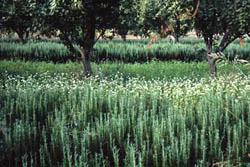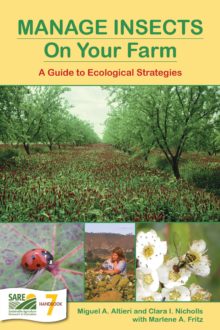
What Does a Biodiverse Farm Look Like?
Agricultural practices that increase the abundance and diversity of above- and below-ground organisms strengthen your crops’ abilities to withstand pests. In the process, you also improve soil fertility and crop productivity. Diversity on the farm includes the following components:
- Spatial diversity across the landscape (within fields, on the farm as a whole and throughout a local watershed)
- Genetic diversity (different varieties, mixtures, multilines, and local germplasm)
- Temporal diversity, throughout the season and from year to year (different crops at different stages of growth and managed in different ways)
Ideally, agricultural landscapes will look like patchwork quilts: dissimilar types of crops growing at various stages and under diverse management practices. Within this confusing patchwork, pests will encounter a broader range of stresses and will have trouble locating their hosts in both space and time. Their resistance to control measures also will be hampered.
Plant diversity above ground stimulates diversity in the soil. Through a system of checks and balances, a medley of soil organisms helps maintain low populations of many pests. Good soil tilth and generous quantities of organic matter also can stimulate this very useful diversity of pest-fighting soil organisms. As a rule, ecosystems with more diversity tend to be more stable: they exhibit greater resistance — the ability to avoid or withstand disturbance — and greater resilience — the ability to recover from stress.
CAUTION: Increasing biodiversity takes a lot of knowledge and management, as it can backfire. some cover crops can provide pest habitat, and mulches can boost populations of slugs, cutworms, squash bugs and other pests.
